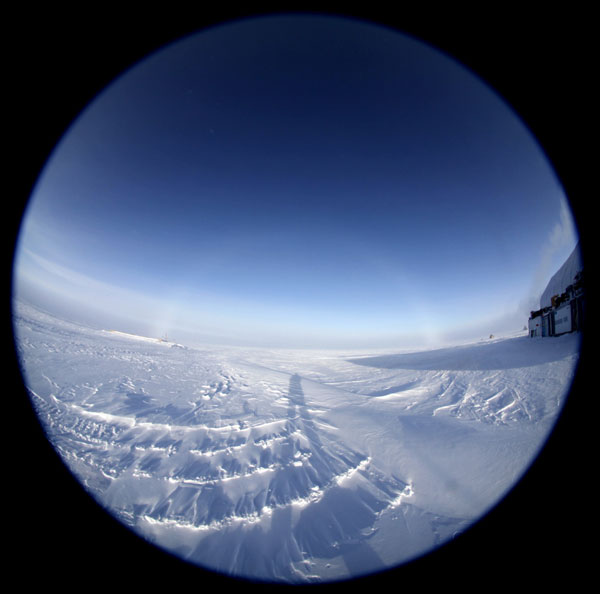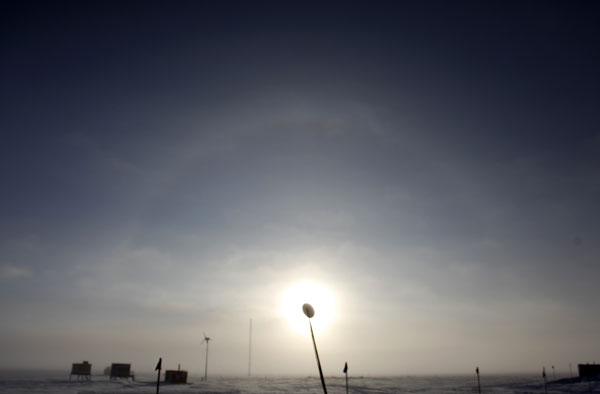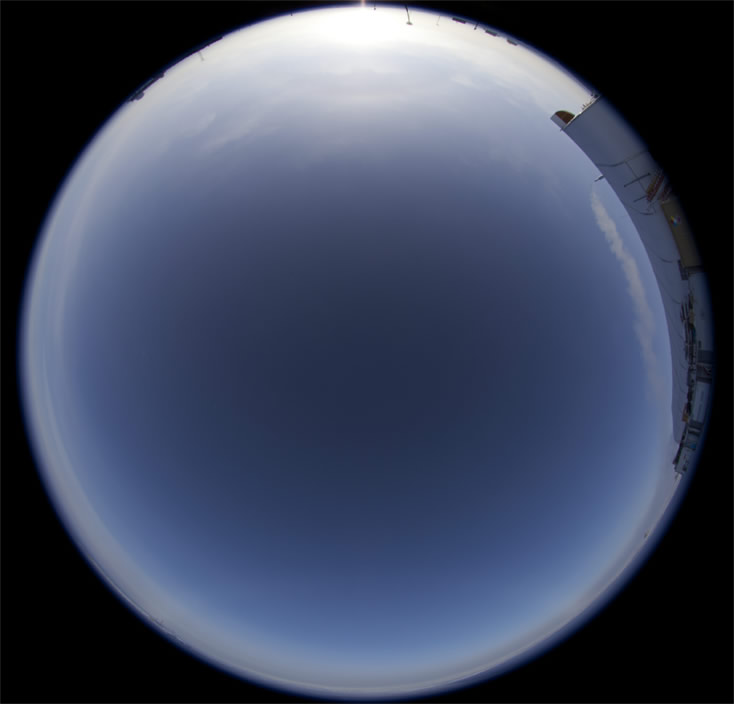What is so special about Bouguer's halo?
Fogbows and 22° halos are relatively common. Why is their simultaneous appearance remarkable? Fogbows are produced when small fog droplets (5 to 50 micron diameter) refract, reflect and diffract sunlight. In this sighting the droplets were supercooled. Ice halos are from the refracted and reflected light from quite large (100 to 1000 micron) ice crystals.
The Bouguer’s halo rarity comes because water droplets and ice crystals cannot co-exist in a stable mixture except at one** unique temperature and pressure, the 'triple point' at 0.01 C and 6.1 mbar. Above zero, ice is unstable. Below zero water droplets are unstable. Thermodynamically, a natural long-lived Bouguer halo from a water drops and ice mixture is an impossibility.
At subzero temperatures water droplets can remain in a metastable state if there are no significant surfaces or nuclei onto which water vapour can condense into ice. But when nuclei are introduced the transformation from a supercooled water fog into diamond dust ice crystals is sudden. The vapour pressure of ice is less than that of supercooled water and so water drops evaporate while ice crystals grow rapidly. This sudden phase change is responsible for hole-punch clouds and their trailing virga of halo forming ice crystals.
Marko Riikonen writes: “My experience from Finland is that you either have fog or diamond dust. On the two occasions I have seen a display where fogs and diamond dusts passed and the moments when halos and fogbow were seen at the same time lasted just seconds. In photos these mostly show up together only because the time exposure had captured both fog and diamond dust stages on film.
In the first case the diamond dust and fog were too thick to let the moon shine through. In the second the sky was overcast. This latter type of occurrence if rather rare - you don't often have diamond dust of fog under cloud cover.”
Ed Stockard comments on the plume at far right, top image, could it have introduced the water droplets that formed the fogbow? "On this day I am quite certain the answer is no. The plume is from our
generator exhaust and is a fair amount north of the fogbow. I also think
if this were the case we would have seen it before now. I had thought
about this as well."
** To be pedantic, there are other triple points in the water-ice system but they are at pressures way above those in our atmosphere.
|




